Read on:
Beginners’ Guide for Microsoft Hyper-V: Overview of Hyper-V Part 1
Beginners’ Guide for Microsoft Hyper-V: How to Install Microsoft Hyper-V Using Server Manager – Part 2
Beginners’ Guide for Microsoft Hyper-V: How to Install Microsoft Hyper-V with PowerShell – Part 3
Beginners Guide for Microsoft Hyper-V: How to Install Microsoft Hyper-V in Windows Server Core – Part 4
Beginners Guide for Microsoft Hyper-V: Remote Management of Hyper-V – Part 5
Beginners Guide for Microsoft Hyper-V: How to Install Hyper-V Server – Part 6
Beginner’s Guide for Microsoft Hyper-V: What is Azure Stack HCI – Part 7
Beginner’s Guide for Microsoft Hyper-V: Windows Admin Center Hyper-V Management – Part 8
Beginner’s Guide for Microsoft Hyper-V: Configuration of Hyper-V Networking Best Practices – Part 9
Beginner’s Guide for Microsoft Hyper-V: Hyper-V Storage Best Practices and Configuration – Part 10
Beginner’s Guide for Microsoft Hyper-V: How to build a Virtual Lab with Hyper-V – Part 11
Beginner’s Guide for Microsoft Hyper-V: Top 10 PowerShell Commands for Hyper-V – Part 12
After installing a Hyper-V server and with basic configuration parameters set for networking and storage, we can begin creating virtual machines. As beginners progress to this point in their Hyper-V lab, creating their first virtual machine is the natural progression of learning. This post will look at creating a Hyper-V virtual machine for beginners and see the basic steps involved.
What is a virtual machine?
Although we have covered many basic principles thus far with what a hypervisor is and how they work, what is a virtual machine exactly? After all, this is the purpose of Hyper-V, to run virtual machines. We have learned that a type 1 hypervisor like Hyper-V provides an abstraction layer, virtualizing the host’s hardware.
A virtual machine is a virtual representation of a physical server or client machine. However, instead of taking the installation media and installing the operating system on the physical hardware as was done decades ago, you install the operating system inside a virtual representation of the physical hardware. This way, you can run dozens of virtual machines on top of modern server hardware.
Virtualized hardware
Virtual machines are installed like any other operating system installed on physical hardware. Hyper-V provides the virtualized hardware equivalents for the operating system, so it does not know it is indeed virtualized and operates the same way as any other operating system installed on physical hardware.
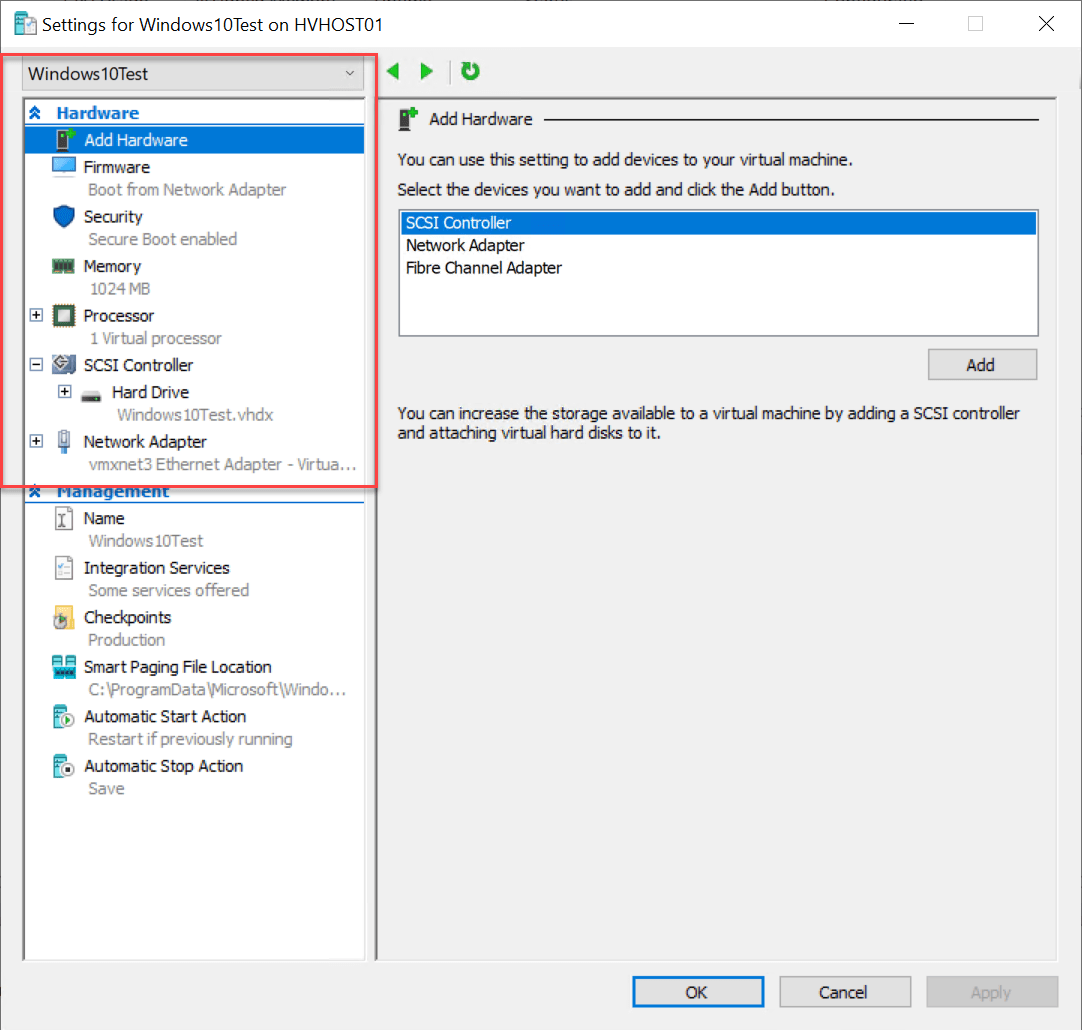
Virtual storage
Virtual machines are installed in special hard disk files. In the world of Hyper-V, these are VHD or the newer VHDX file format. So, these are simple files in Hyper-V host storage for all practical purposes. But, again, the guest operating system consumes the storage presented in the VHD and VHDX files as native local storage.

Virtual networking
The Hyper-V virtual machine is provided network connectivity by a Hyper-V virtual switch configured on the Hyper-V host. If the virtual switch is configured as an external virtual switch, it can be connected to the physical network and communicate with other hosts on the network.
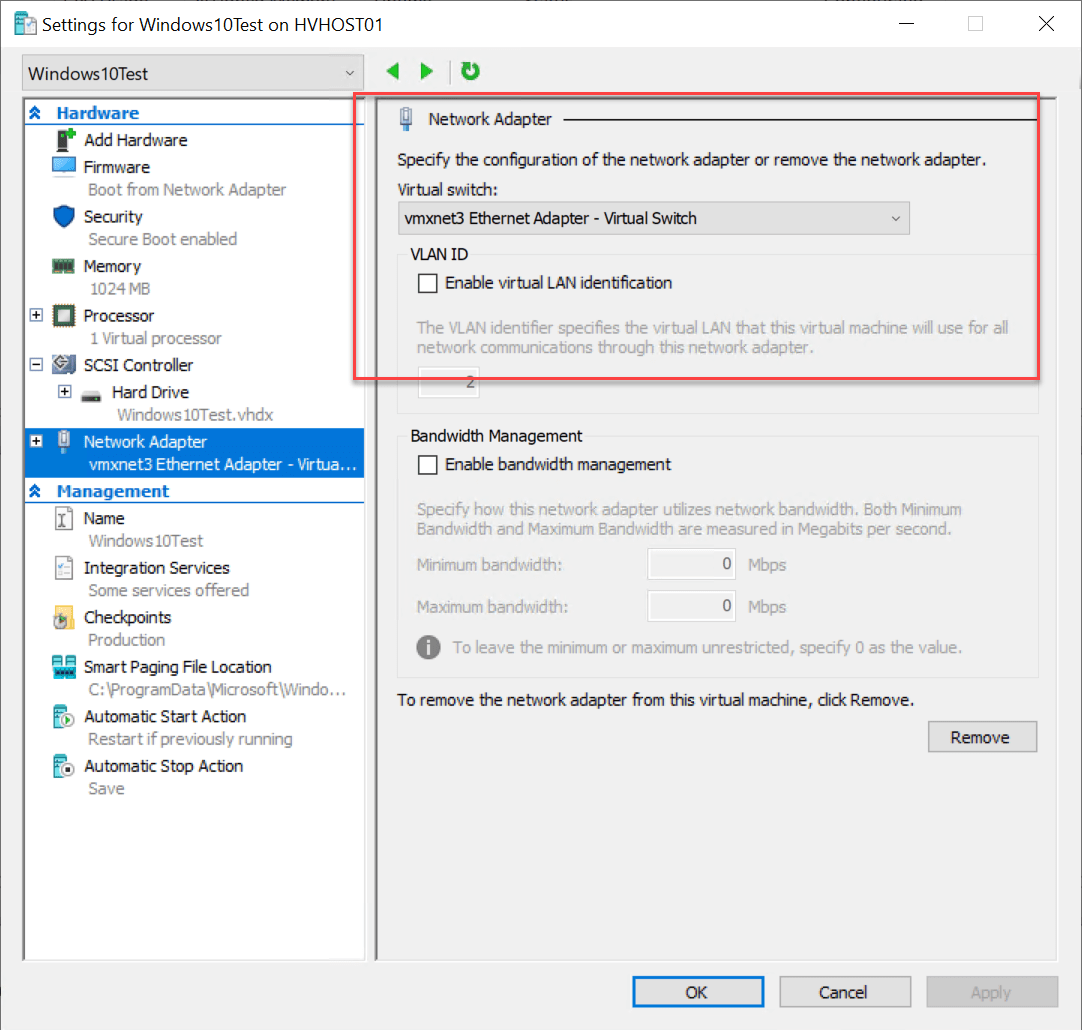
Creating a new Hyper-V virtual machine
Let’s now look at creating a Hyper-V virtual machine using the Hyper-V Manager GUI utility. Beginning the new virtual machine wizard is just right-clicking your Hyper-V host and selecting New > Virtual Machine. It will launch the New Virtual Machine Wizard.

Name the new Hyper-V virtual machine. You can also select to store the virtual machine in a different location than the default location you configured when adding the Hyper-V role. If you click the Store the virtual machine in a different location you can use the Browse button to select a location.
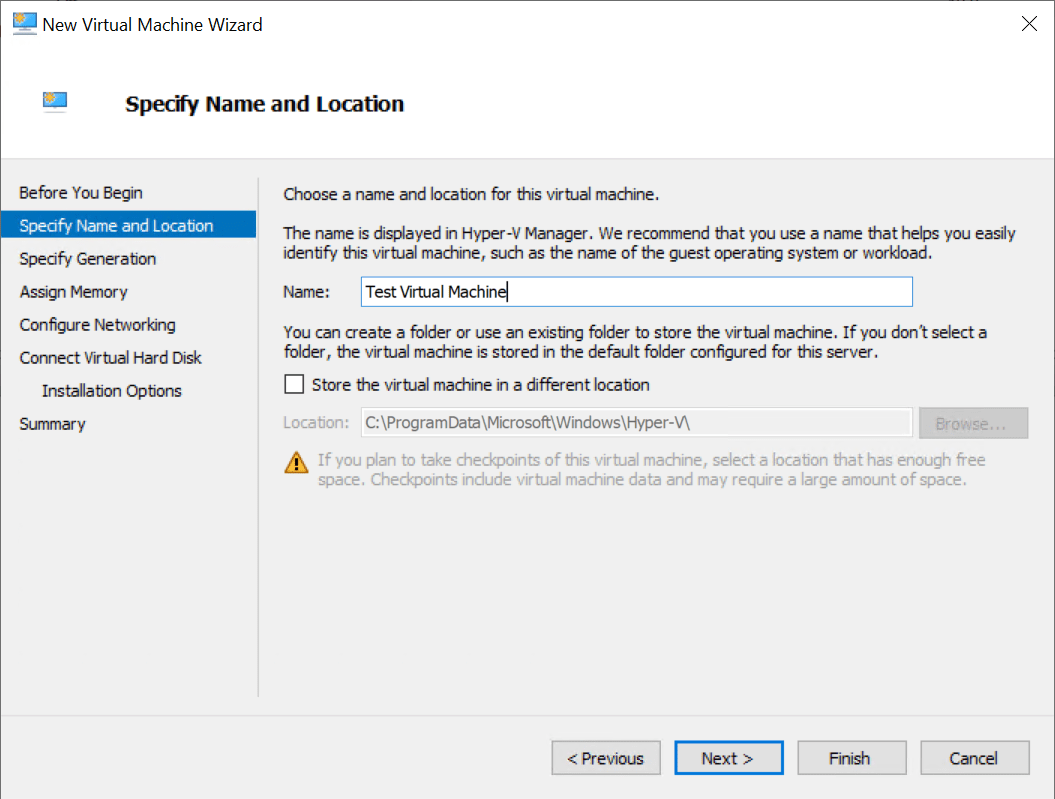
Next, we specify the generation of the virtual machine. Note the descriptions of the options below:
- Generation 1 – This virtual machine generation supports 32-bit and 64-bit guest operating systems and provides virtual hardware which has been available in all previous versions of Hyper-V
- Generation 2- This virtual machine generation provides support for newer virtualization features, has UEFI-based firmware, and requires a supported 64-bit guest operating system
More on Gen1 vs Gen2 comparison here
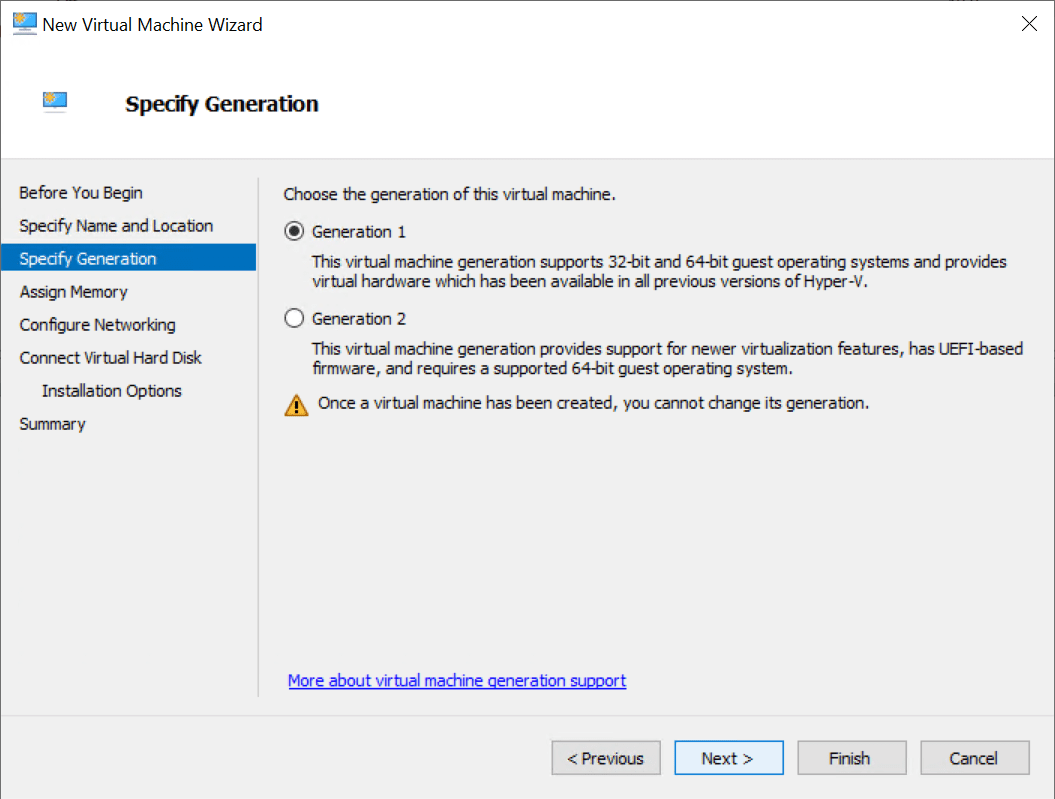
On the next screen, you can assign the memory allocated to the virtual machine. You can also configure the virtual machine to use Dynamic Memory. This setting allows squeezing every last bit of RAM out of the Hyper-V host and is good for hosts that are heavily overcommitted with RAM resources.
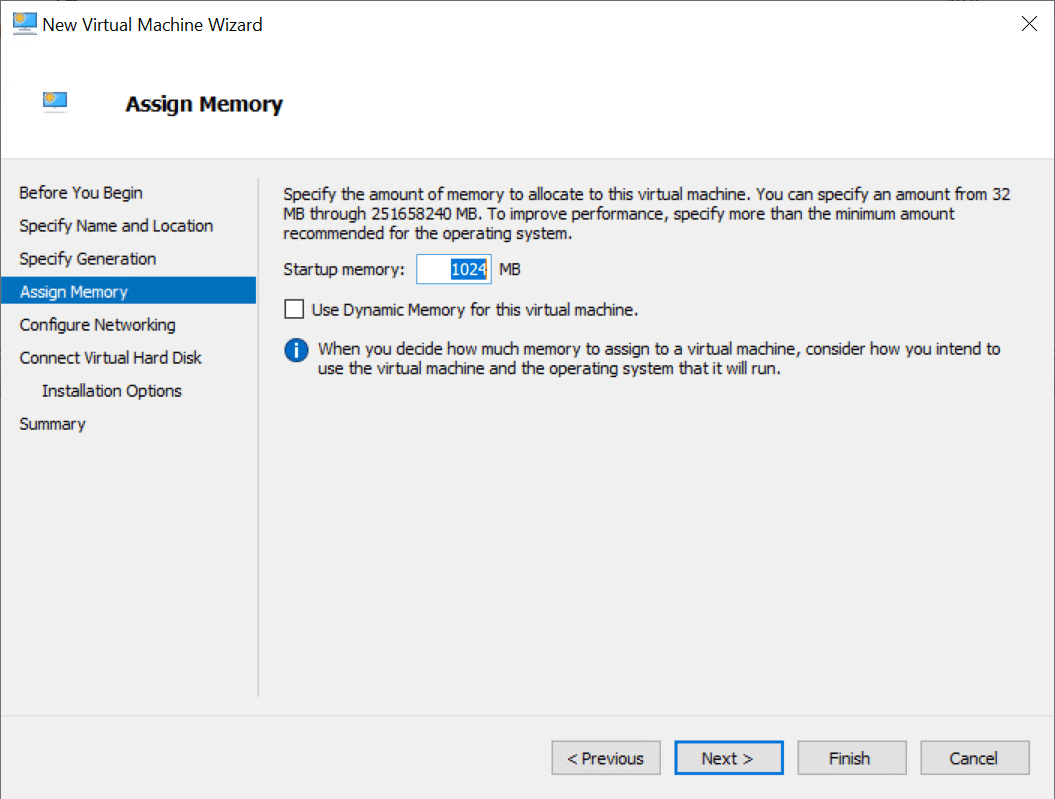
On the configure networking screen, you can configure the network adapter to use a virtual switch or it can remain disconnected. You can click the dropdown menu next to the connection dialog box and select the network connection you want to use.
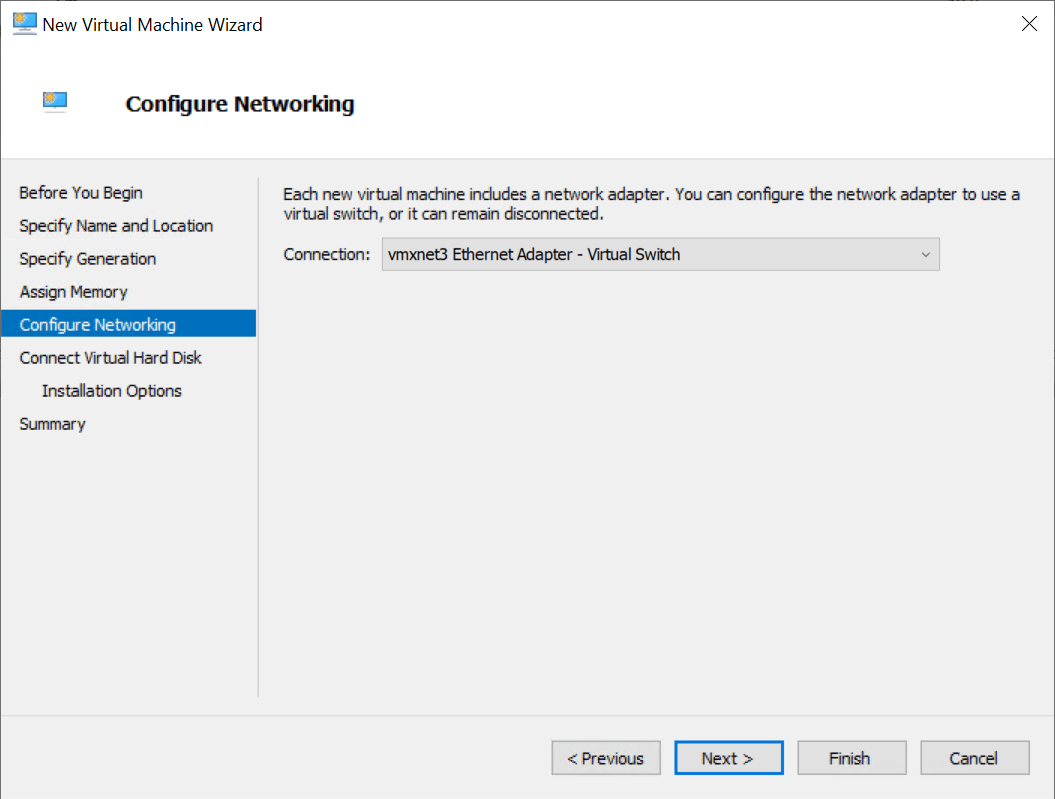
On the connect virtual hard disk screen, you have several options for creating the virtual machine hard disk storage. You can create a new virtual hard disk along with the hard disk name, location, and size. In addition, you can add an existing hard disk. Finally, you can choose not to add a virtual hard disk.
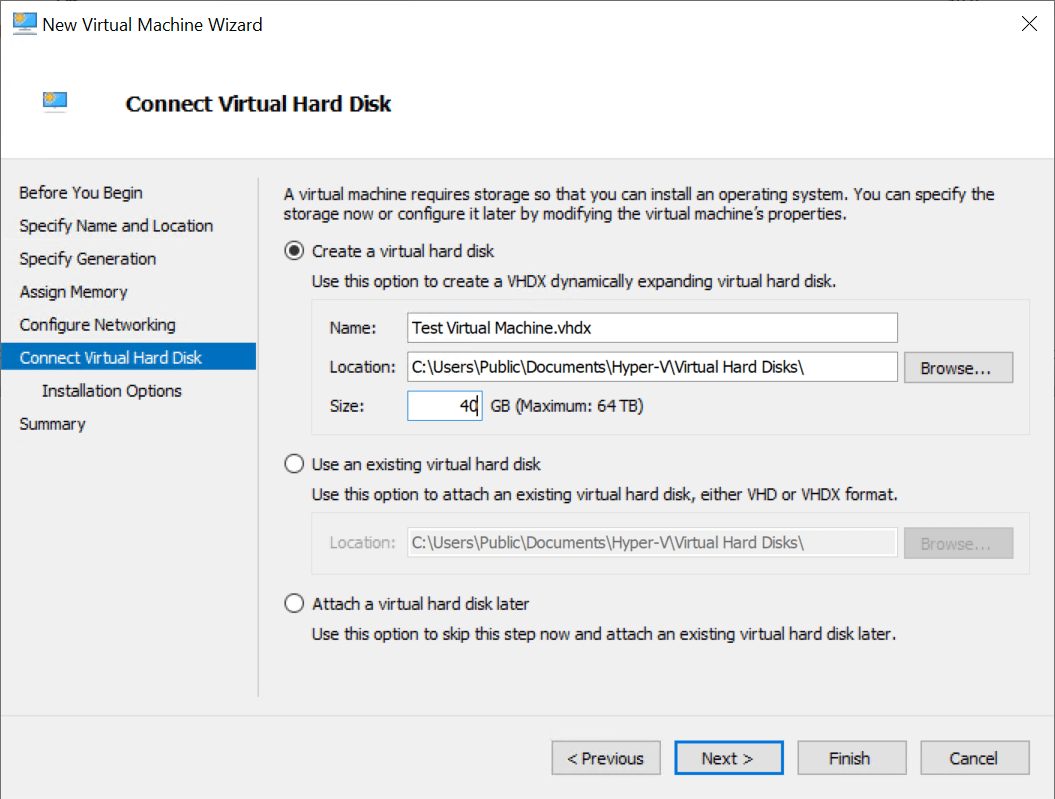
On the Installation Options screen, we can choose how we want to install the operating system in the guest virtual machine. Here we can choose:
- Install an operating system later
- Install an operating system from a bootable CD/DVD-ROM
- Install an operating system from a bootable floppy disk
- Install an operating system from a network-based installation server
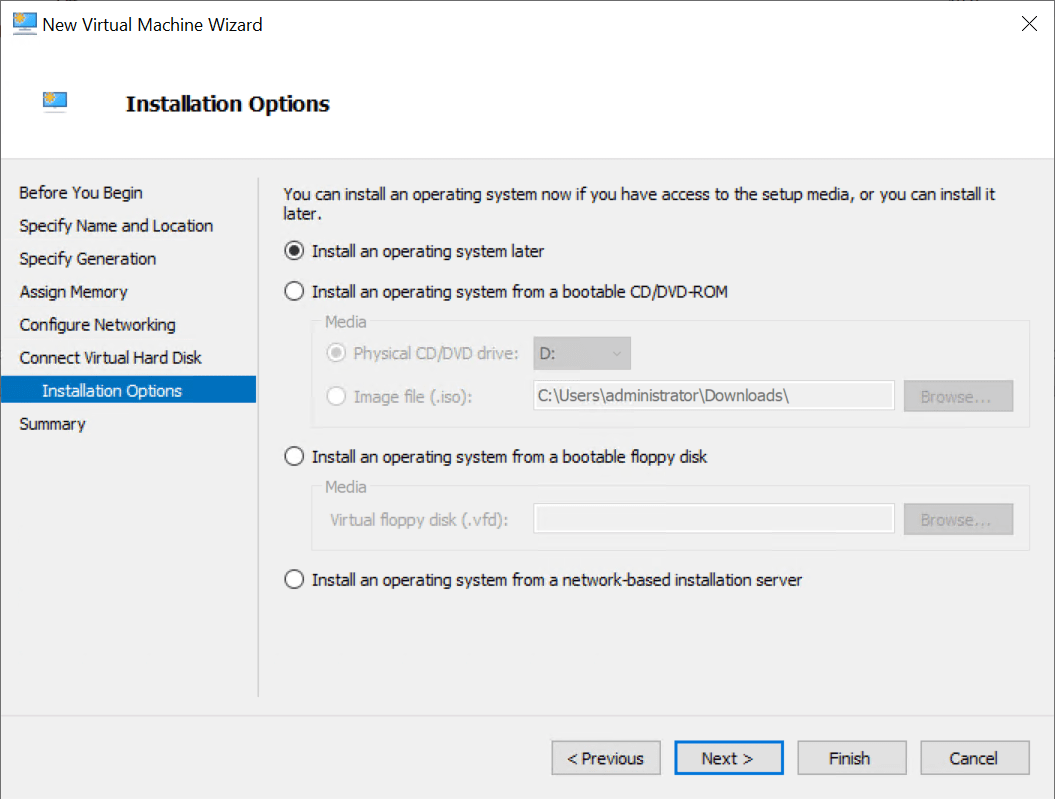
Finally, on the ‘completing the new virtual machine wizard, verify the settings of the virtual machine on the summary screen, and click Finish.
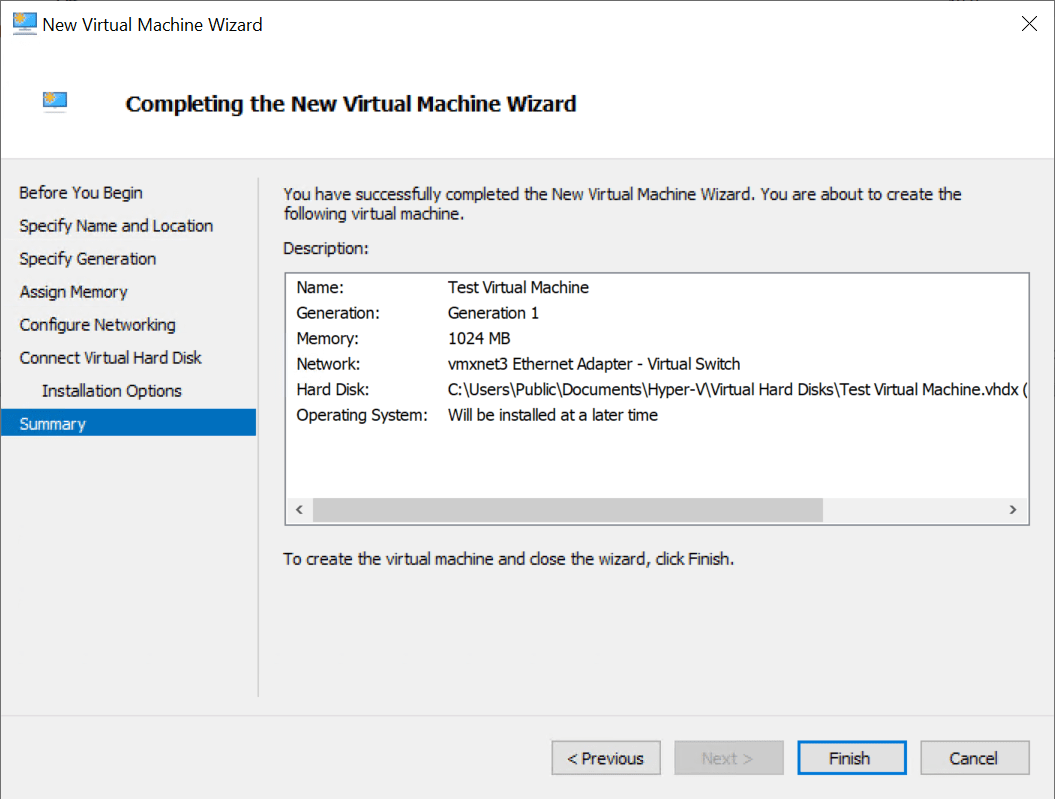
Hyper-V virtual machine FAQs
What is a Hyper-V virtual machine?
It is a virtual representation of a physical server or client machine running on physical hardware. The Hyper-V hypervisor emulates the hardware which the guest operating system needs to function properly.
How do you create a Hyper-V virtual machine?
Using the process shown above, you can use Hyper-V Manager and the new virtual machine wizard to create a new Hyper-V virtual machine.
Can Hyper-V run multiple virtual machines?
Yes, it can run as many virtual machines as the physical Hyper-V host resources allow.
Wrapping up
Hyper-V provides a robust platform for running virtual machines. Virtual machines are virtual instances of guest operating systems loaded into the virtual constructs of the virtual machine emulated on the Hyper-V host. The Hyper-V environment provides virtual hardware, storage, and networking for the guest virtual machine. The guest virtual machine leverages the virtual hardware presented to the guest operating system.
Using the new virtual machine wizard in Hyper-V Manager, we can easily create a new Hyper-V virtual machine. The wizard takes you through the process of naming the virtual machine, choosing the storage location, and configuring the generation, memory, networking, storage, and operating system installation options.
Follow our Twitter and Facebook feeds for new releases, updates, insightful posts and more.

